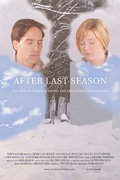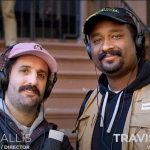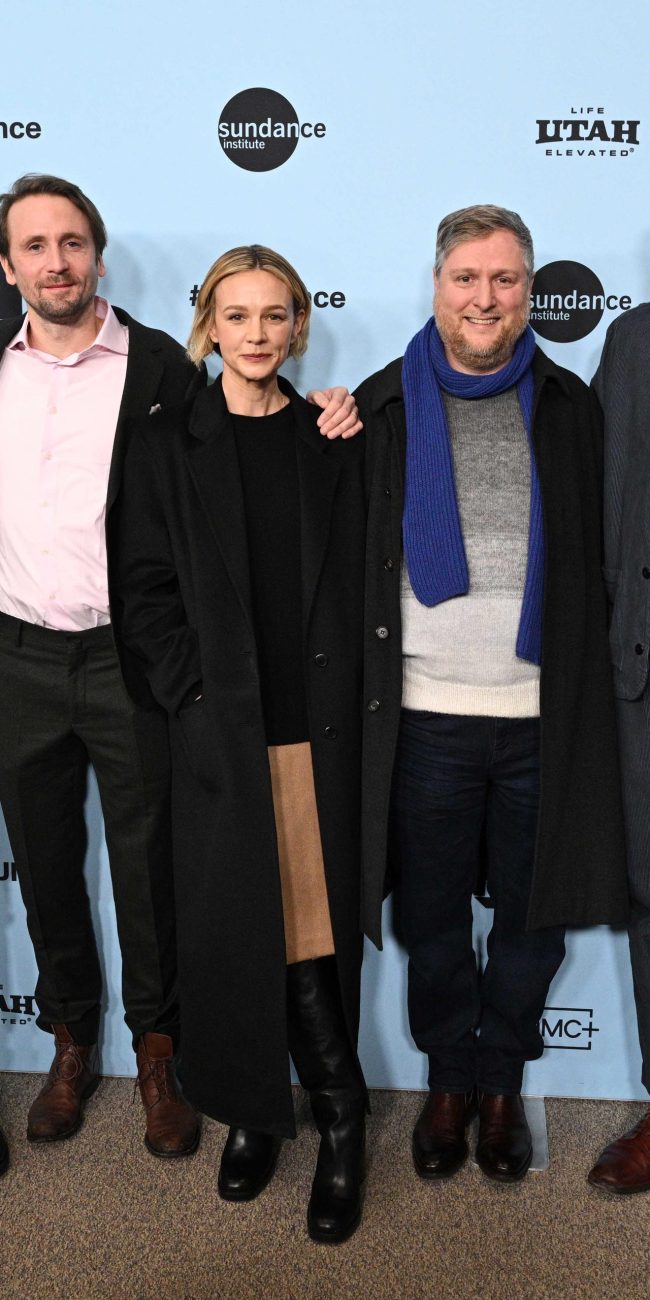 (After Last Season is currently enjoying a presumably one-week release through Cinemark theaters. Showtimes, locations and the infamous trailer can be found at the official website.) I still don’t know that I buy it. Which is to say that, having driven 90 minutes to see Mark Region’s After Last Season at a Cinemark megaplex in the middle of the desert, having uttered the title at the box office with the same nervousness by which young men of old might have purchased a ticket to their first adult film, having sat down in the theater, having watched all 93 minutes of the film itself projected on 35mm and then driving 90 miles back home afterward, I feel no more convinced that it’s real than I did when I first watched (and watched and watched) the trailer after it surfaced online three months ago. The cards just don’t line up. Let me suspend disbelief for a moment, though, and attempt to describe the film. After Last Season is as bad as it looks, but its badness is of such a quizzical sort that it transcends mere incompetence. It is formally engaging, because it is so formally incorrect. It is not at all unlike its trailer, in that it primarily consists of a series of choices that seem to have been made entirely arbitrarily, in service of a plot that is buried in non sequitur. To watch the film is to take in the vision of someone with a severe case of disconnection: what is most consistently striking about the film is that the gap between conception and realization is irreparably wide. The most direct example (even moreso than the cardboard MRI scanner) occurs when a character reads a story in the newspaper – and that newspaper is represented by a piece of 8 1/2 x 11 paper, fresh from the inkjet printer, upon which has been printed the words ‘Morning News.’ The same goes for the performances, the sets, the special effects (which, in spite of whatever the credits might state, did not require the work of two effects houses), which are all symbols standing in place of real performances, real special effects, real physical space. And space! The film is obsessed with geography, without ever quite managing to establish it. The characters are constantly mapping out vague spatial boundaries. Everything is next to something else; nothing is ever empirical or definite. “I’ve never been to that town, but I’ve been through it” is one of the famous lines from the trailer, to which the film ads such bon mots as “is that the room in the middle of the hallway?’” and “we’re in the room next to the meeting room” and “we have another room next to the living room.” That last one is, in fact, the final line of the movie. Cut to black. It’s all too easy to list off the film’s offenses against form and style: the headroom-obsessed compositions, the egregiously directional lighting, the sound that has been run through far too many noise-removal filters, the CGI that is clearly the work of someone who’s spent approximately one afternoon learning how to use Maya, the production design that consists primarily of blank pieces of paper taped obsessively to walls (there are three creative fetishes in the picture, and they are spatial adjacency, headroom and paper on walls). And the editing, which takes the concept of insert shots to a decidedly abstract level. These are all things that can be ascertained from the trailer; the full length picture simply provides them in greater quantity. In so much as the trailer is hilarious, so is the film. It’s ineptitude is staggering, in long form and short. But in long form it’s also stultifying, and after watching it, I felt a discontent growing inversely to the expecations I’d entered the theater with. The film’s badness, I realized, is not fun. I went home and re-read Susan Sontag’s Notes On Camp, and found that not a single one of her famous line items could be applied to the film. “The essential element is seriousness, a seriousness that fails,” she writes of her subject matter, adding previously that “pure examples of Camp are unintentional; they are dead serious.” But those are mere means, and while After Last Season might seem to prescribe to them, it falls so far short of the necessary ends of camp that those of us who drove one, two, seven hours to see the film upon its release (an odyssey which is itself camp) were fated to diminishing return. This is not a self-sustaining phenomenon, on which midnight audiences can thrive. This is not a work of wretched, wondrous egomania, such as Tommy Wissau’s The Room. The film is academically fascinating, particularly when studied under the circumstances by which it is playing out on this national stage, and Sontag could certainly have written at great length about it and the conditions it represents; but it is not Camp. And so, in the wake of that fading hope, and in light of the absence of information about the work itself, all we’re left with is same giant question mark that preceded the film. Why? A sign of artistic growth is that one learns from one’s mistakes and moves on. Let’s assume that Mark Region, whoever he is, is incapable of such a perspective, and that he also possesses the funds necessary to strike 35mm prints, have the film rated by the MPAA and four-wall a five-city release. If he is passionate enough about his work to take it this far, why the complete lack of promotional presence? He has done no press, save for one half-interview at the time of the trailer’s release. He has no presence online. There’s very little evidence that he actually exists, and while this artistic hermitage is admirable, it’s also highly suspect. I can’t bring myself to believe that the ego required to push a film of this caliber to this level of fruition would let that same film speak entirely for itself. There is purity of intent, and then there’s naivete, and for this film to exist on the level on which it’s being presented to us, one must believe that they can work in perfect conjunction. I’m not certain that I can. I don’t necessarily believe that it’s a marketing ruse; I don’t necessarily believe that it’s a practical joke. I don’t know that it’s not the sincere work a severely misguided individual. After Last Season has shed no further light on its own extancy, and hence I have only my experience as a filmmaker, my basic understanding of human psychology and my gut to tell me that something, something, is amiss. — David Lowery
(After Last Season is currently enjoying a presumably one-week release through Cinemark theaters. Showtimes, locations and the infamous trailer can be found at the official website.) I still don’t know that I buy it. Which is to say that, having driven 90 minutes to see Mark Region’s After Last Season at a Cinemark megaplex in the middle of the desert, having uttered the title at the box office with the same nervousness by which young men of old might have purchased a ticket to their first adult film, having sat down in the theater, having watched all 93 minutes of the film itself projected on 35mm and then driving 90 miles back home afterward, I feel no more convinced that it’s real than I did when I first watched (and watched and watched) the trailer after it surfaced online three months ago. The cards just don’t line up. Let me suspend disbelief for a moment, though, and attempt to describe the film. After Last Season is as bad as it looks, but its badness is of such a quizzical sort that it transcends mere incompetence. It is formally engaging, because it is so formally incorrect. It is not at all unlike its trailer, in that it primarily consists of a series of choices that seem to have been made entirely arbitrarily, in service of a plot that is buried in non sequitur. To watch the film is to take in the vision of someone with a severe case of disconnection: what is most consistently striking about the film is that the gap between conception and realization is irreparably wide. The most direct example (even moreso than the cardboard MRI scanner) occurs when a character reads a story in the newspaper – and that newspaper is represented by a piece of 8 1/2 x 11 paper, fresh from the inkjet printer, upon which has been printed the words ‘Morning News.’ The same goes for the performances, the sets, the special effects (which, in spite of whatever the credits might state, did not require the work of two effects houses), which are all symbols standing in place of real performances, real special effects, real physical space. And space! The film is obsessed with geography, without ever quite managing to establish it. The characters are constantly mapping out vague spatial boundaries. Everything is next to something else; nothing is ever empirical or definite. “I’ve never been to that town, but I’ve been through it” is one of the famous lines from the trailer, to which the film ads such bon mots as “is that the room in the middle of the hallway?’” and “we’re in the room next to the meeting room” and “we have another room next to the living room.” That last one is, in fact, the final line of the movie. Cut to black. It’s all too easy to list off the film’s offenses against form and style: the headroom-obsessed compositions, the egregiously directional lighting, the sound that has been run through far too many noise-removal filters, the CGI that is clearly the work of someone who’s spent approximately one afternoon learning how to use Maya, the production design that consists primarily of blank pieces of paper taped obsessively to walls (there are three creative fetishes in the picture, and they are spatial adjacency, headroom and paper on walls). And the editing, which takes the concept of insert shots to a decidedly abstract level. These are all things that can be ascertained from the trailer; the full length picture simply provides them in greater quantity. In so much as the trailer is hilarious, so is the film. It’s ineptitude is staggering, in long form and short. But in long form it’s also stultifying, and after watching it, I felt a discontent growing inversely to the expecations I’d entered the theater with. The film’s badness, I realized, is not fun. I went home and re-read Susan Sontag’s Notes On Camp, and found that not a single one of her famous line items could be applied to the film. “The essential element is seriousness, a seriousness that fails,” she writes of her subject matter, adding previously that “pure examples of Camp are unintentional; they are dead serious.” But those are mere means, and while After Last Season might seem to prescribe to them, it falls so far short of the necessary ends of camp that those of us who drove one, two, seven hours to see the film upon its release (an odyssey which is itself camp) were fated to diminishing return. This is not a self-sustaining phenomenon, on which midnight audiences can thrive. This is not a work of wretched, wondrous egomania, such as Tommy Wissau’s The Room. The film is academically fascinating, particularly when studied under the circumstances by which it is playing out on this national stage, and Sontag could certainly have written at great length about it and the conditions it represents; but it is not Camp. And so, in the wake of that fading hope, and in light of the absence of information about the work itself, all we’re left with is same giant question mark that preceded the film. Why? A sign of artistic growth is that one learns from one’s mistakes and moves on. Let’s assume that Mark Region, whoever he is, is incapable of such a perspective, and that he also possesses the funds necessary to strike 35mm prints, have the film rated by the MPAA and four-wall a five-city release. If he is passionate enough about his work to take it this far, why the complete lack of promotional presence? He has done no press, save for one half-interview at the time of the trailer’s release. He has no presence online. There’s very little evidence that he actually exists, and while this artistic hermitage is admirable, it’s also highly suspect. I can’t bring myself to believe that the ego required to push a film of this caliber to this level of fruition would let that same film speak entirely for itself. There is purity of intent, and then there’s naivete, and for this film to exist on the level on which it’s being presented to us, one must believe that they can work in perfect conjunction. I’m not certain that I can. I don’t necessarily believe that it’s a marketing ruse; I don’t necessarily believe that it’s a practical joke. I don’t know that it’s not the sincere work a severely misguided individual. After Last Season has shed no further light on its own extancy, and hence I have only my experience as a filmmaker, my basic understanding of human psychology and my gut to tell me that something, something, is amiss. — David Lowery

Latest Posts











David
Discovered this 14 years too late. After reading the descriptions of all the movies on 366weirdmovies.com (including the runners-up to the 366 weirdest) I chose to watch this one. I loved it. Note, I am naive enough to believe that the film exhibits “purity of intent.” As such, readers may not take me any more seriously than Mark Region was taken by movie critics at the time. I think you, Mr. Lowery, and even more so, Jason Coffman, Medium.com, are some of the few to see value in “
After Last Season.” Your description of the film’s obsession with “geography,” is insightful:
“The film is obsessed with geography, without ever quite managing to establish it. The characters are constantly mapping out vague spatial boundaries. Everything is next to something else; nothing is ever empirical or definite. “I’ve never been to that town, but I’ve been through it” is one of the famous lines from the trailer, to which the film ads such bon mots as “is that the room in the middle of the hallway?’”
You also note, “It is formally engaging, because it is so formally incorrect.” And you seem to believe “… it transcends mere incompetence.” I would add that it’s consistent breaking of certain formal rules, by replacing them with their opposites, creates a logic of its own, one that exhibits an exceptional competence as a “structuralist” undertaking.
Was this Region’s true intent? I have no idea. Clearly, there’s nothing to support my view in his few public statements, which could be seen to prove anything but. Even so, if he’s being coy, this is nothing new for artists. While most structuralists have a philosophical bent that leads them to pontificate endlessly, it is quite possible that Region simply doesn’t fit the mold.
The beauty of seeing this work without much context is that you are free to see it as you will. By stripping the film of expected forms of storytelling, it forces you to see this film as a story form without form, the rawest form of story. The story itself is disjointed and confusing, but nonetheless touches on a number of typical film storylines and genres: detective mystery, thriller, horror, ghost story, college dorm life, sci-fi, medical hero, and even a bit of gore. The stripped down script, the bland, uninflected acting allow each of these multiple genres to stand on their own as showpieces without any stimulation of the lower brain reaches (although, I didn’t want the killer to stab our two heroes).
But, what I liked most about After Last Season was our two unromantically involved heroes. Indeed, somehow their interaction touched me in a way that the generic romance, or even “best-buddies” film could never do. After all, I’ve seen those enough times for them to have become obnoxious and manipulative, pandering as they do to current notions of the path to happiness.
In this film the only path to happiness is the film itself: the cardboard MRI, paper on the wall, soundless CGI, self-propelled chairs, bursts of a few musical notes here and there, a potpourri of storylines underlaid by the “suspense” of catching the murderer, all designed to break all the basic rules that have been developed over the last century to enable our ability to suspend disbelief. I am grateful to Region for allowing me to have full control over my disbelief.